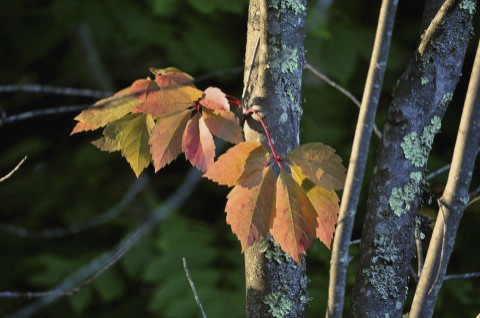A Lesson From the Season: Change and Letting Go
It’s Fall in Washington, DC. Watching the leaves turn color always makes me think about change.
Did you know that when the leaves turn, the green does not actually change into a different color? Rather, the chlorophyl that creates the green color simply falls away, revealing the amazing reds, oranges and yellows that were there all the time. The leaves let go of something, and something else – often quite spectacular – emerges.
There’s a lesson in this for us. If we want to change, we often assume that we have to make ourselves into something new. Yes, change takes work. But the turning leaves remind us that there is an important receptive, “grace-full” aspect to change. Rather than will ourselves into a different color, we first need to allow our dominant hues to recede. Change starts with letting go.
Here’s an example from my own life. “Effort” is one of my dominant personal traits; it’s my “color green.” I tell myself that applying maximum effort to everything I do is the key to my effectiveness. In part, this serves me and others well, because it causes me to strive for high quality in everything I do. But there’s a huge downside. I often expend more energy on something than is necessary or useful. I can get wound up in perfectionism and over-thinking, which often detract from the quality of what I’m doing. So this strong trait of mine, which has worked so well and so often, can also tie me and others up in knots.
So it’s time for a change. I’ve tried willing a new ‘zen me’ into being. And you can imagine how well that’s gone. Any shifts that I have experienced have arisen gradually from relaxing my cherished ways. Letting go has allowed other colors to emerge: colors that are more interesting and effective than I could ever have manufactured.
Relaxing my grip on efforting, I become naturally a bit more open, more collaborative, less tight. I waste less time and drive myself (and others) just a little less nuts. And often, the quality of what I’m doing is as good as or better than what I produce when I work something to death. I haven’t made change happen; I’ve simply eased up a bit on my dominant hues.
It’s a gentle process, but it is not easy.
- It takes awareness to notice our “color green” moves.
- It takes intention to resist engaging our default.
- It takes a bit of courage. If we relax the grip on our ‘color green,’ how do we know what hues are lying in wait? What if we don’t like them? What if they don’t work?
- It requires restraint and patience to let go of our dominant moves in small increments, so that our ‘green’ can fade gradually.
If you want guidance on how to make a natural and lasting shift in how you manage or live, watch the leaves and follow their lead.
What about you?
- What aspects of yourself do you feel have outlived their usefulness as dominant characteristics or habits? (Not ones that you would want to lose altogether, but that you’d like to augment with other hues.)
- What mechanism might you set up to notice when you’re leaning into your “color green” yet again?
- Once you notice that you’re “greening” again, what small experiment could you make to simply relax that pattern just a bit?
- When you relax your pattern, watch what new hues emerge: within you, in the quality of your actions, and in your interactions with others. Don’t look for radical change, but rather for small hints of something new.
And in case you need more inspiration, here’s a wonderful song by Carrie Newcomer about leaves, letting go and and the emergence of something new. Happy fall!



Thank you Leslie! Your insights always help me see things differently.
Leslie, I love this piece…that part about how the green recedes and in doing so, lets the other colors, that were there all the time (!) come forward is beautiful and very thought provoking.
Thanks so much, Kris!